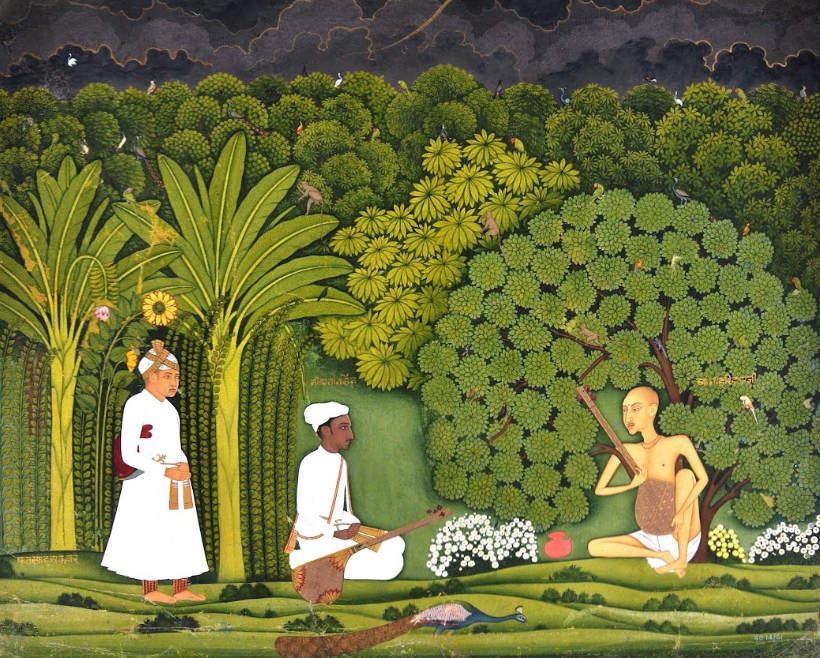
Swami Haridasa, a singer and poet of high order, is seated in his hermitage at Vrindavana, a verdant environment full of plants, trees, flowering shrubs and creepers. The place is a quiet one and suited best to one’s absorption in a musical performance. He is shaven-headed and has a lean body with a divine glow on his face. He is holding a tambura in his hands and is engrossed in his divine music.
Tansen, a disciple of Haridasa, is seated at a little distance, facing him. The Mughal emperor Akbar is hiding himself behind a grove of banana trees.
It is said that Akbar, the Mughal Emperor, once asked Tansen if his guru would come to his court.
Tansen replied that his guru would not oblige the great king. Akbar then decided to visit Swami Haridasa at Vrindavana and enjoyed the music of this great saint-musician.
After his return to Agra he asked Tansen why in his music the melodious touch was missing which was there in his guru’s melody.
To this, Tansen replied, “I sing for the king of the country, while Swami Haridasa does it for the king of kings, the Almighty, hence the difference.”
Painting titled “Swami Haridasa with Tansen and Akbar at Vrindavan” created 1700 AD – 1760 AD, National Museum, Janpath, New Delhi (Rights)

